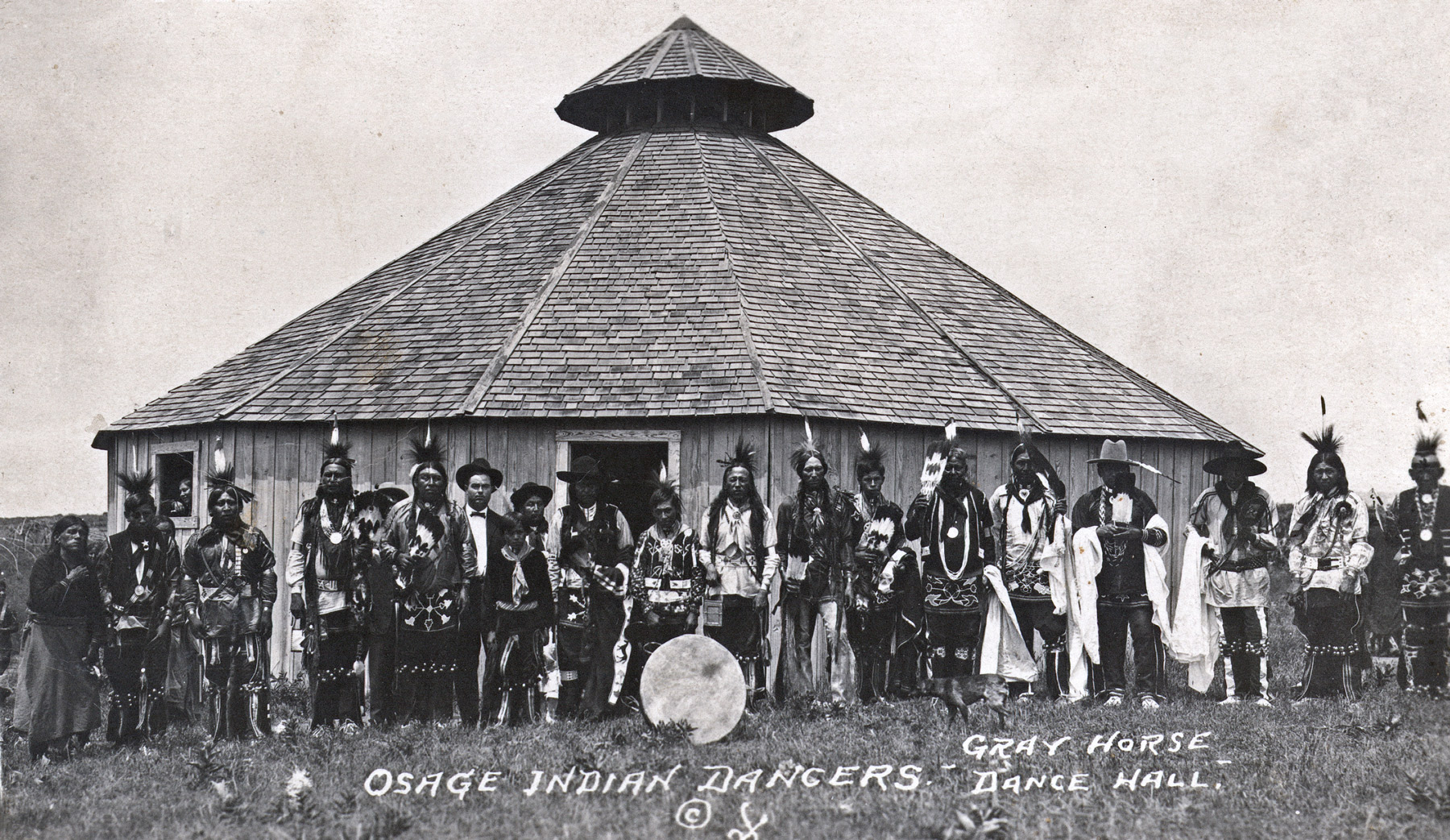GRAY HORSE.
The Osage Indian ceremonial town of Gray Horse (Grayhorse, Greyhorse) is situated in Osage County (the former Osage Indian Reservation), eight miles south and fourteen miles west of Pawhuska on County Road E0320. The settlement's first trade store was constructed in 1884 and was used as a U.S. government subagency and for Osage tribal meetings.
The Big Hill band of Osage, who rarely traveled to Pawhuska, asked that a trading post be established near them. John Florer, a Pawhuska trader, sent his brother-in-law, Ed Finney, to select an appropriate site for the post. Finney chose a location near present Gray Horse Creek and was welcomed by the Big Hills. The land belonged to Ka-wa-ko-dsa (Gray Horse) and was given to Finney so that he could build the trading post. The place was named in honor of Ka-wa-ko-dsa.
In the mid-1880s the Osage at Gray Horse received the i'n-lon-schka dance, traditions, and drum from the Ponca Indians. In 1908 the Osage built a round house in which they could hold their ceremonial dances, and they later constructed a Native American Church building. In February 1963 a prairie fire destroyed both structures. In spring 1964 a pavilion was built to replace the round house. Small arbors were erected for the clans and for visiting Indians who took part in the yearly celebrations.
There are presently few homes at Gray Horse. Some houses or camps are used only during special events, as when the i'n-lon-schka dance is held each June. Many noted Osage leaders are buried in the Gray Horse cemetery. Gray Horse had a U.S. Post Office from 1890 to 1932, several businesses, and a public school (with a Works Progress Administration–built schoolhouse) through 1963.
See Also
Bibliography
Alice Anne Callahan, The Osage Ceremonial Dance I'n-Lon-Schka (Norman: University of Oklahoma Press, 1990).
John W. Morris, Ghost Towns of Oklahoma (Norman: University of Oklahoma Press, 1977).
Citation
The following (as per The Chicago Manual of Style, 17th edition) is the preferred citation for articles:
Howardean Rhoads, “Gray Horse,” The Encyclopedia of Oklahoma History and Culture, https://www.okhistory.org/publications/enc/entry?entry=GR028.
Published January 15, 2010
© Oklahoma Historical Society


